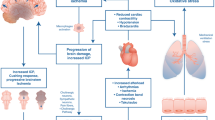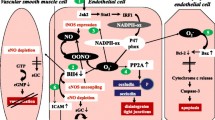Abstract
This is a report of a study aimed at putting into practice a new theory for hypothermic preservation of viable organs. A perfusion fluid elaborated according to this theory was applied in preservation of the heart, and resulted in storage of the heart for up to 72 hours with preservation of its functions (rhythm, presystolic ventricular pressure, systolic ventricular pressure, cardiac work, coronary blood pressure, sensitivity to drugs) and its morphology. An important finding was that repeated heart storage for 24 hours alternating with functional testing for 5–7 hours could be performed without irreversible alterations of cardiac function and fine structure. Furthermore, during functional testing following storage the hearts consistently demonstrated improvement of function in time, suggesting that the preserved myocardial tissues were able to rapidly achieve metabolic reequilibration. The results of this study provide the possibility of developing a system for efficient ex vivo heart conditioning before transplantation.
Résumé
Nous avons testé la valeur d'une nouvelle théorie sur la préservation d'organes en hypothermie. Un liquide de perfusion conforme à cette théorie a été utilisé pour la préservation cardiaque. Il permet de conserver le coeur pendant 72 heures, sans altérations de ses fonctions (rythme, pression ventriculaire pré-systolique et systolique, travail cardiaque, pression coronaire, sensibilité aux médicaments) ni de sa morphologie. De plus, le coeur peut-être, à plusieurs reprises, conservé pendant 24 heures, avec des intervalles de reprise fonctionnelle de 5–7 heures, sans que sa fonction ni sa structure fine ne soient altérées de façon irréversible. Enfin, l'étude fonctionnelle montre qu'après conservation la fonction cardiaque s'améliore avec le temps, suggérant donc une rééquilibration métabolique rapide du tissu myocardique. Les résultats de cette étude permettront la mise au point d'un système efficace de conservation cardiaque ex-vivo en vue de la transplantation.
Similar content being viewed by others
References
Humphries, A.L.: Organ preservation: a review. Transplantation5:1138, 1967
Dragomir, C.T., Puşescu, E.: Theoretical considerations regarding the cell membrane function during cold-induced preservation of tissues and organs: new possibilities for optimizing the process. J. Theor. Biol.47:281, 1974
Collins, G.M., Bravo-Shugarman, M., Terasaki, P.I.: Kidney preservation for transportation. Initial perfusion and 30 hours ice storage. Lancet2:1219, 1969
Collins, G.M., Hartley, L.C.J., Clurice, G.J.A.: Kidney preservation for transportation: experimental analysis of optimal perfusate composition. Br. J. Surg.59:187, 1972
Păuşescu, E., Cărnaru, S., Beroniade, V., Păunescu, V., Chirvasie, R.: Kidney preservation in a hypothermic “cytoplasmic” solution before transplantation. In Dialysis and Renal Transplantation, J.S. Cameron, D. Fries, C.S. Ogg, editors. London, Pitman Medical, 1972, pp. 491–499
Păuşescu, E., Cotuţiu, C., Tomescu, E., Pătru, A.: Electron optic morphological and cytochemical evidence in support of a “cytoplasmic” solution for kidney preservation. Eur. Surg. Res.5:438, 1973
Pauşescu, E., Fotiade, B., Ionescu, M., Nazarian, P.: La consommation d'oxygène et l'utilisation des substances de combustion par le myocarde en hypothermie profonde. Ann. Chir. Thorac. Cardiovasc.1:559, 1962
Păuşescu, E.: Myocardial metabolism during artificial hypothermia (Romanian). Bucharest, Institute of Medicine and Pharmacy Press, 1971, pp. 116–194
Păuşescu, E., Chirvasie, R.: Artificial hypothermia and myocardial metabolism: the hypothermic cardiac arrest and the oxygen reserve of the myocardium (Romanian). Chirurgia (Bucur.)21:943, 1972
Wischnik, A.: Verfahren und Untersuchungen zur Konservierung von Spenderherzen durch hypotherme asanguine Perfusion. Thesis. Ludwig-Maximilian University Press, Munich, 1977, pp. 4–28
Wischnik, A., Mendler, N., Hagl, S., Gebhardt, K., Sebening, F.: Myocardial preservation by hypothermic perfusion: optimizing preservation and transplantation procedure. Eur. Surg. Res.8[Suppl. 1]:49, 1976
Robicsek, F., Sanger, P.W., Taylor, F.H.: Simple method of keeping the heart “alive” and functioning outside of the body for prolonged periods. Surgery53:525, 1963
Proctor, E., Parker, R.: Preservation of isolated heart for 72 hours. Br. Med. J.4:296, 1968
Proctor, E.: Preservation of the dog heart for 96 hours at 4°C. Br. J. Surg.58:306, 1971
Proctor, E.: Early sinus rhythm in dog hearts preserved for 96 hours and assessedex vivo. Transplantation13:437, 1972
Păusescu, E., Cotutiu, C., Tomescu, E., Mirancea, N., Rusu, I., Medesan, A.: Heart ultrastructure and function during a new procedure of preservation. Eur. Surg. Res.8[Suppl. 2]:9, 1976
Watanabe, T.: Significance of ammonia in myocardial metabolism. Jpn. Circ. J.33:1811, 1968
Krebs, H.A., Lowenstein, J.M.: The tricarboxylic acid cycle. In Metabolic Pathways, Vol. 1, D.M. Greenberg, editor. New York, Academic Press, 1960, pp. 129–203
Axelrod, B.: Other pathways of carbohydrate metabolism. In Metabolic Pathways, Vol. 1, D.M. Greenberg, editor. New York, Academic Press, 1960, pp. 205–249
Ziegelhöffer, A.: Metabolic studies on heart preservation. J. Mol. Cell. Cardiol.2:173, 1971
Marinescu, V., Păuşescu, E., Lugojan, R., Rădulescu, C.: Energy metabolism in the failing canine heart allograft. Rev. Roum. Physiol.7:273, 1970
Păuşescu, E.: Enzyme involvements in the metabolism of myocardial high energy phosphates (Romanian). Med. Interna. (Bucur.)22:523, 1970
Dragomir, C.T., Barbier, A., Ungureanu, D., Ionescu, V., Păuşescu, E., Chirvasie, R., Ghiţescu, D., Filipescu, G.: Potassium and sodium ions in the glycerinated skeletal muscle: distribution changes induced by adenosine triphosphate and nondissociable anesthetic substances. Physiol. Chem. Phys.7:287, 1975
Author information
Authors and Affiliations
Additional information
Supported by the German Heart Center, Munich, and the German Academy Department for Foreign Scientific Relationships, Bonn.
Rights and permissions
About this article
Cite this article
Păuşescu, E., Mendler, N., Gebhardt, K. et al. Exceptional performance in heart preservation with an amino acid—Containing perfusion fluid. World J. Surg. 2, 109–117 (1978). https://doi.org/10.1007/BF01574475
Issue Date:
DOI: https://doi.org/10.1007/BF01574475




